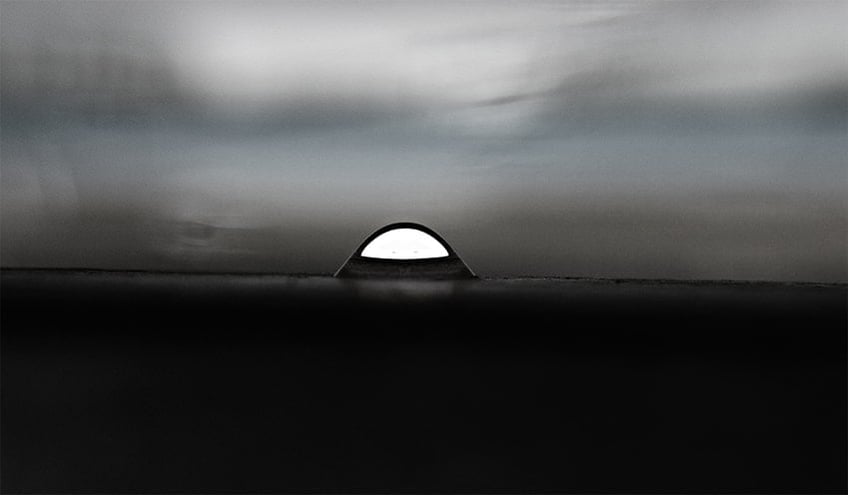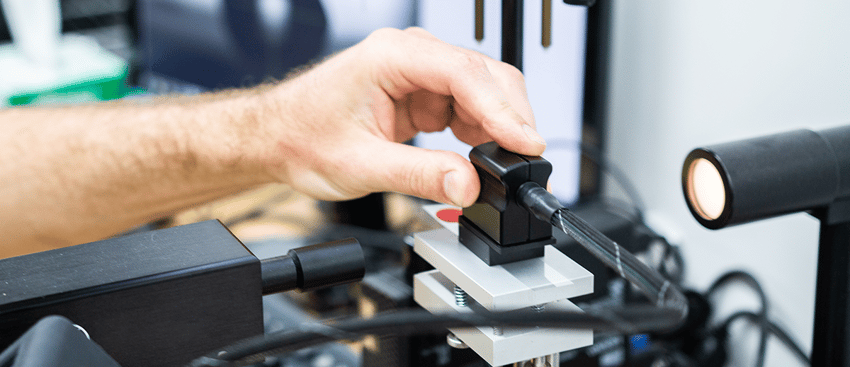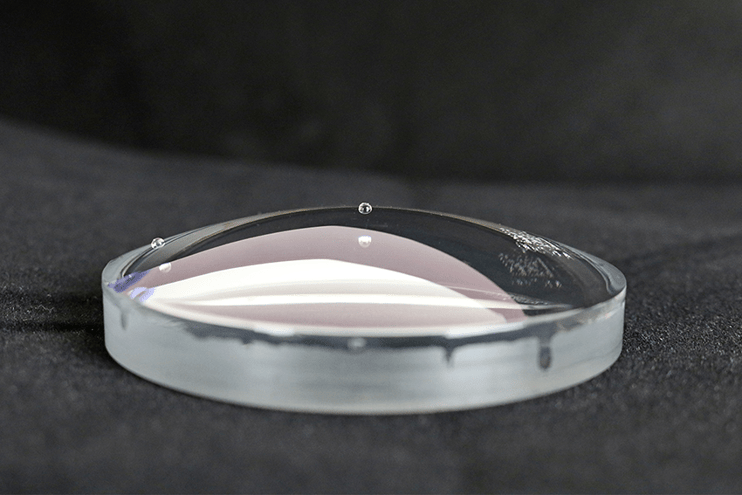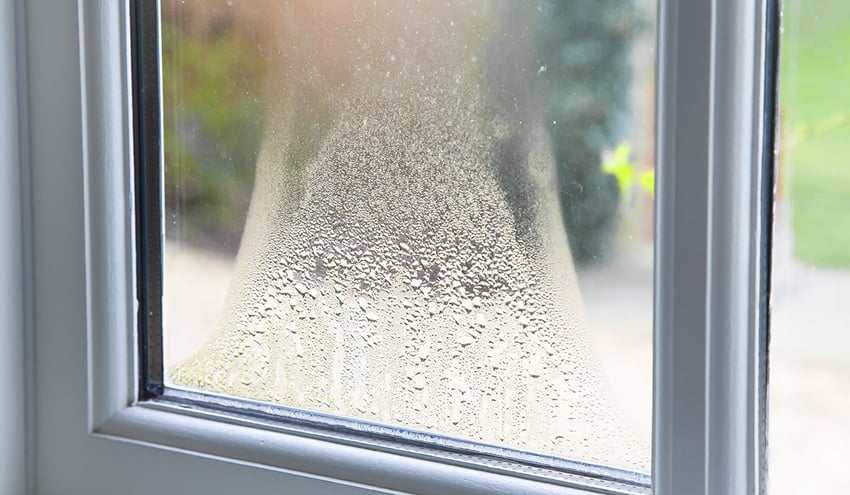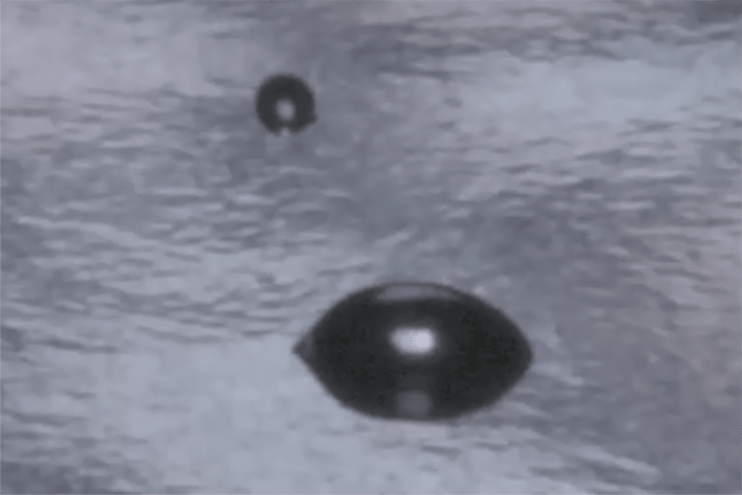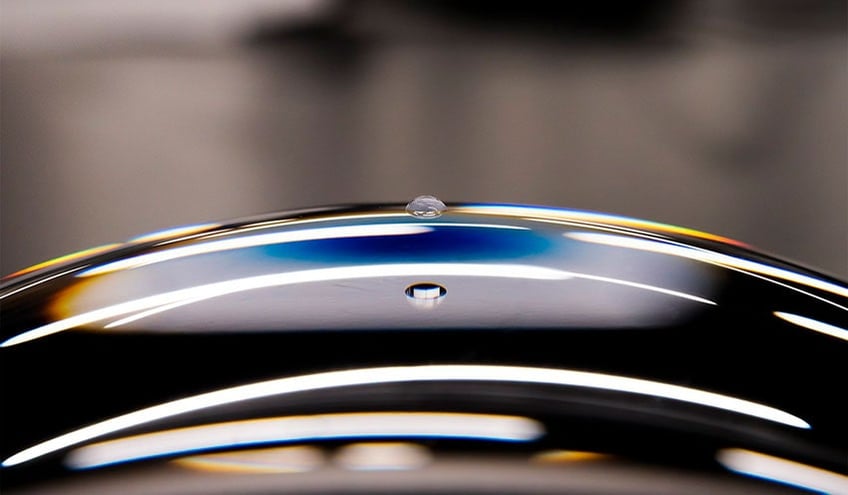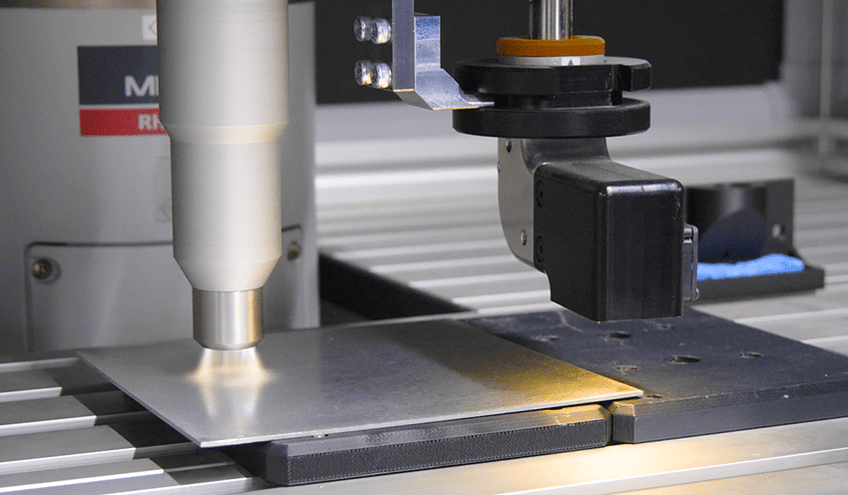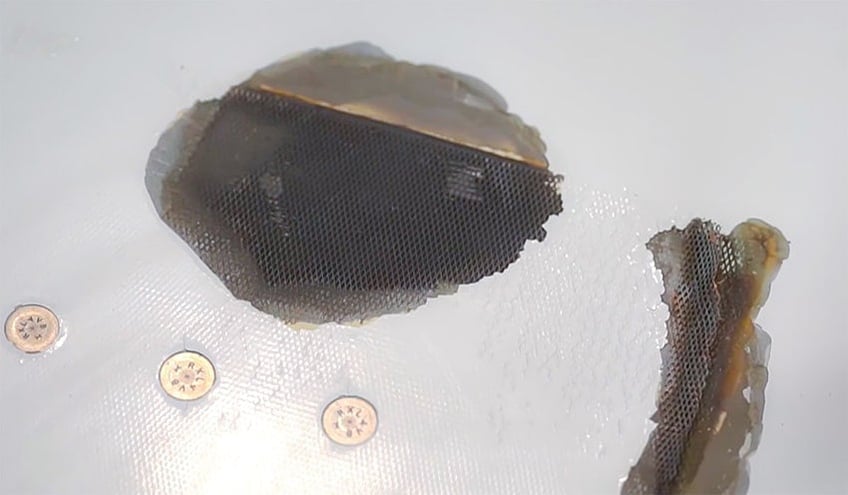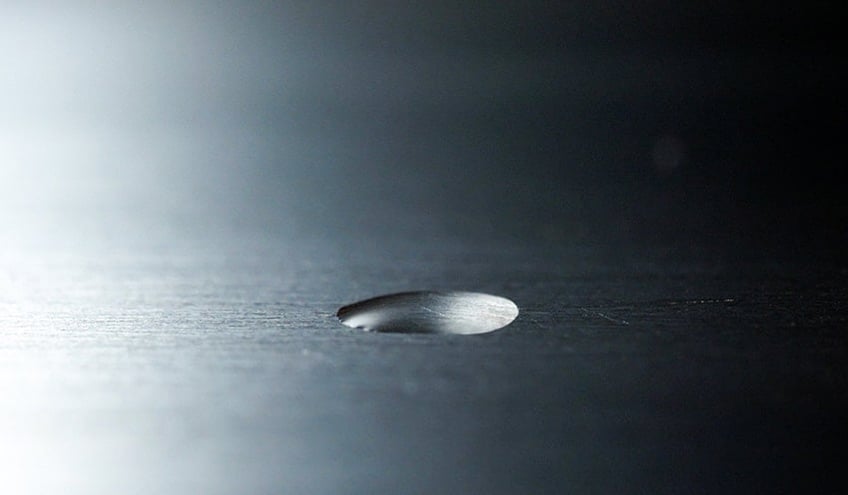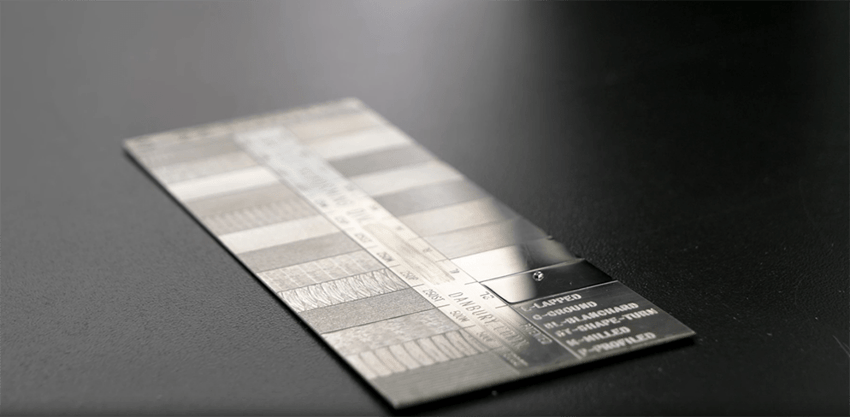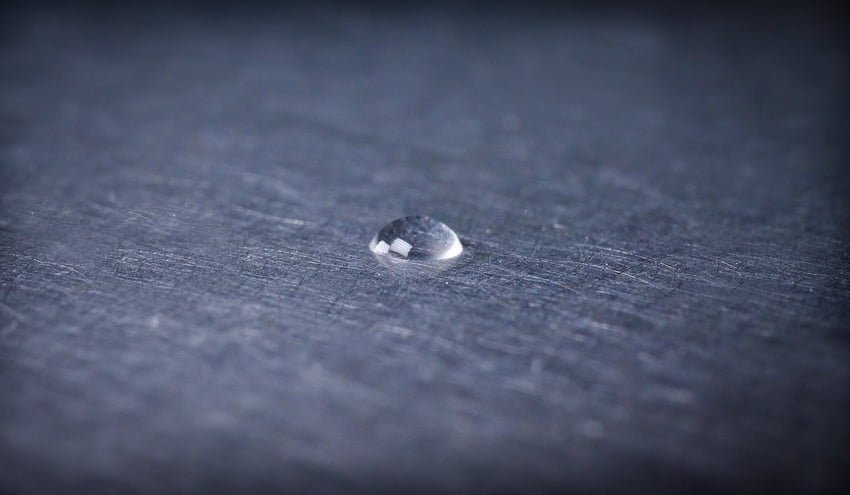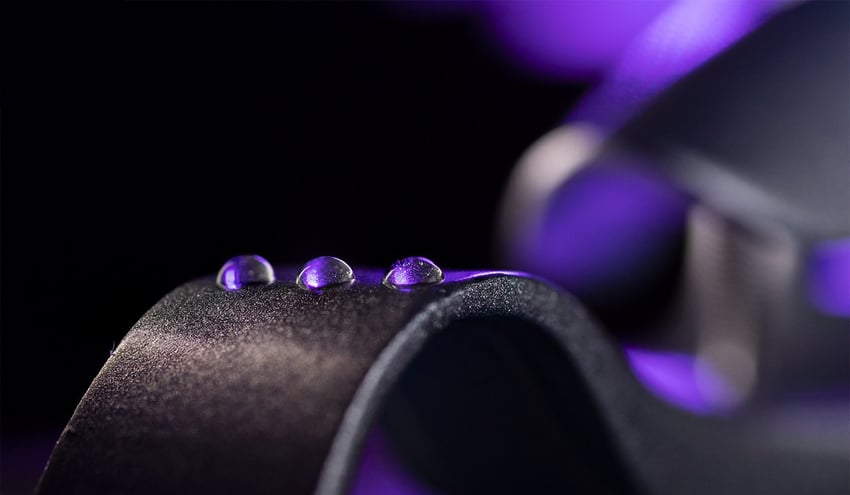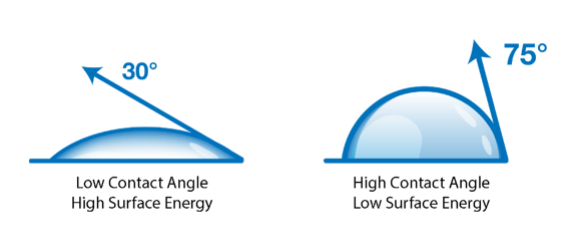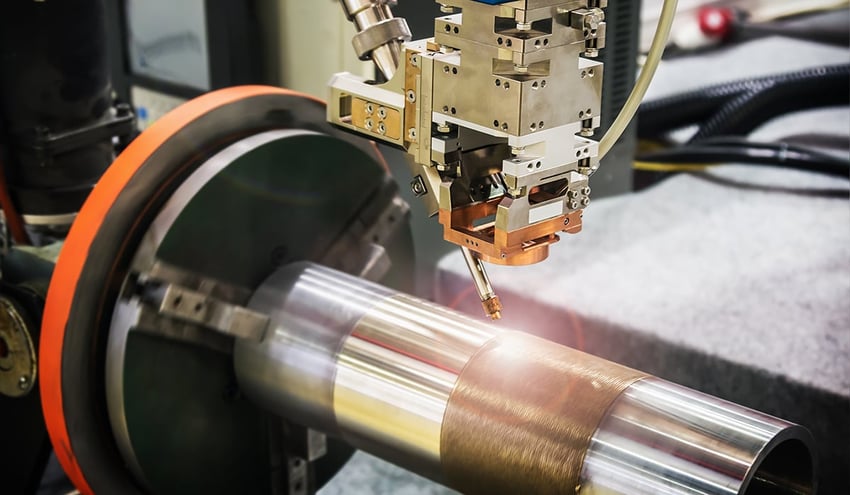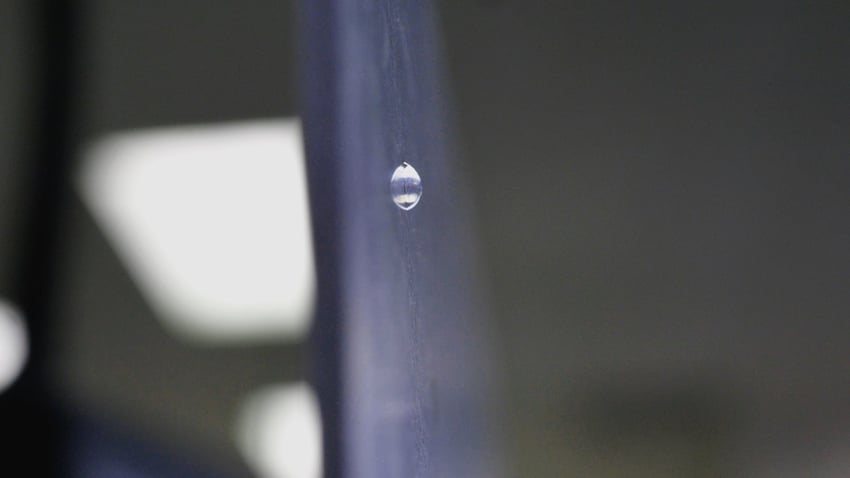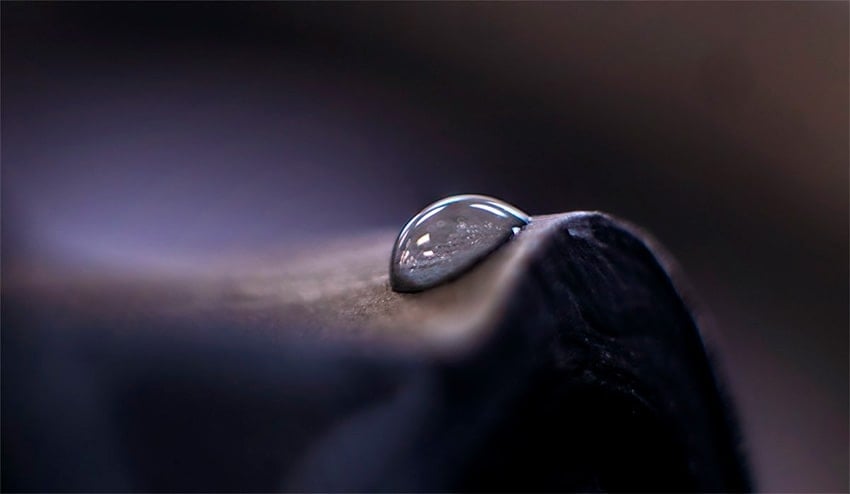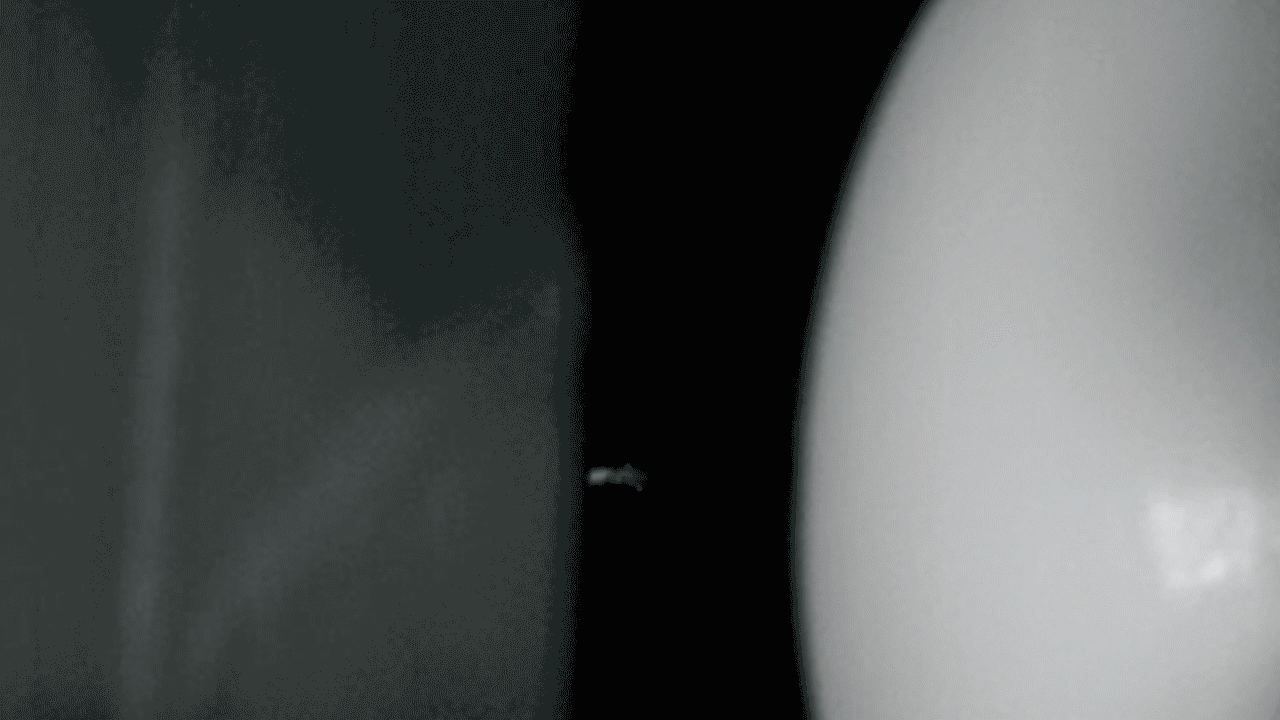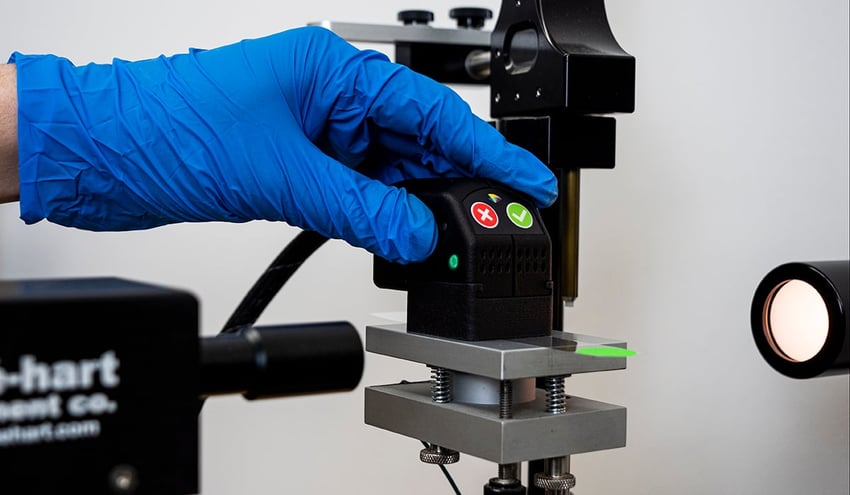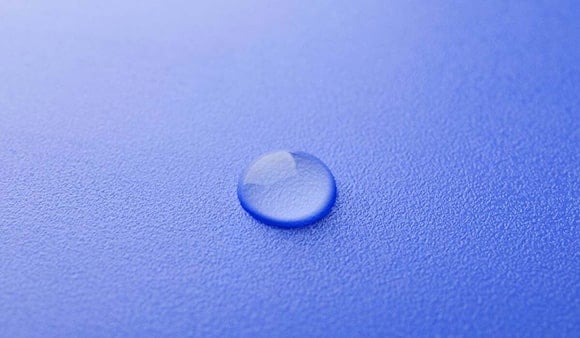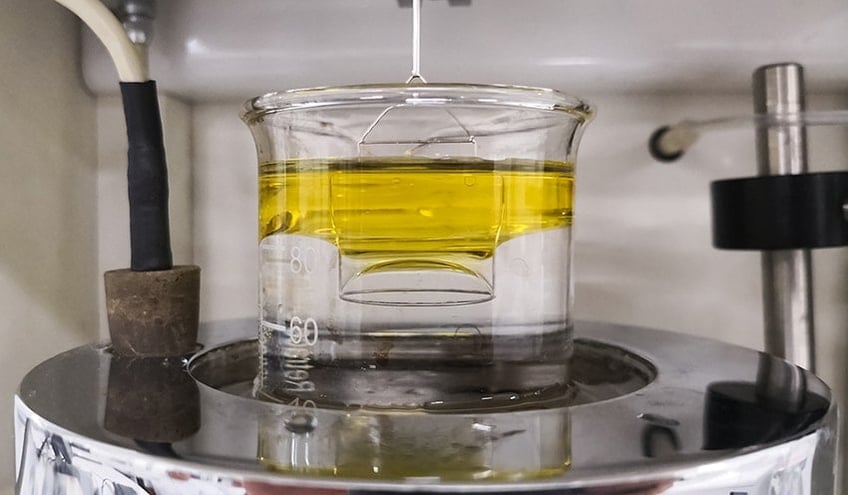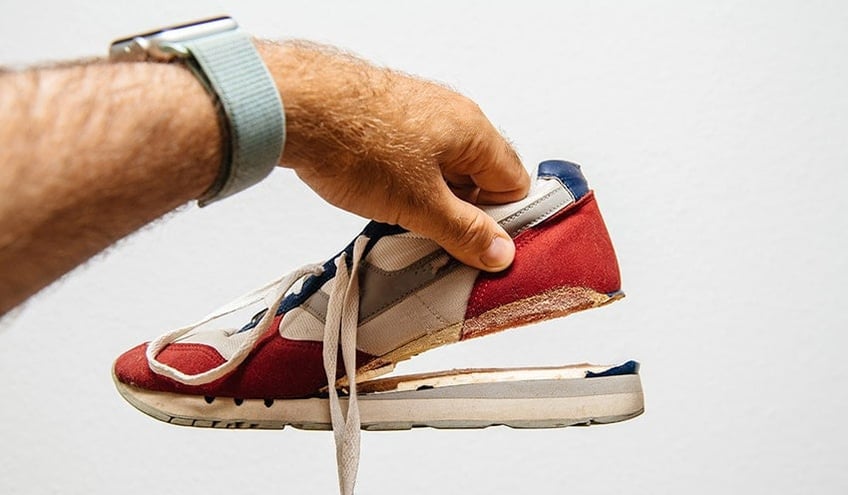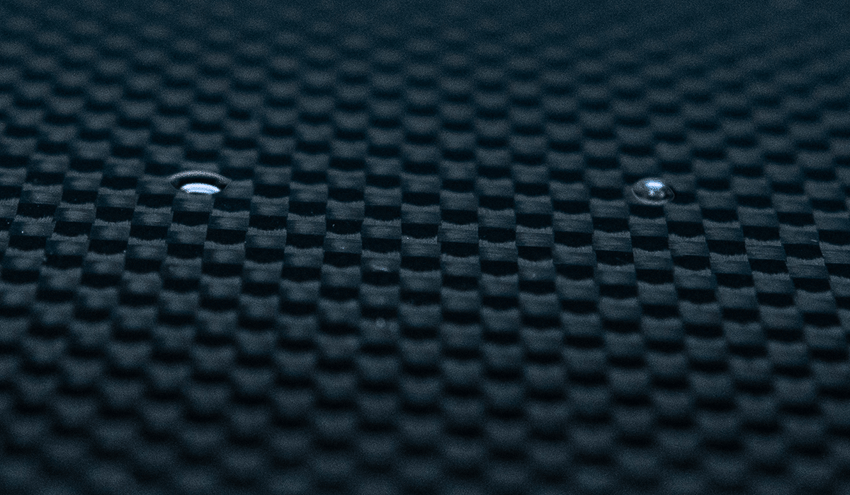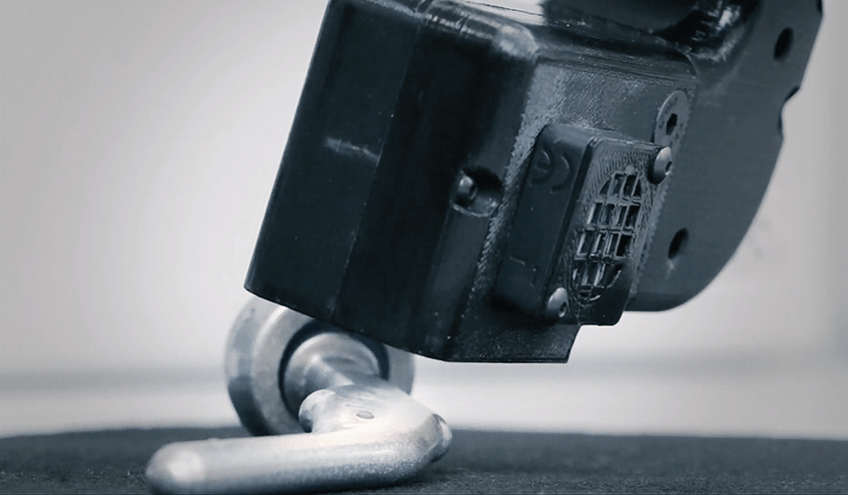Adhesives are an integral part of modern manufacturing, but choosing the right adhesive is only one part of the equation. It’s well known that you won’t get a reliable bond with an adhesive if you just slap the adhesive onto your material without doing anything to prepare that surface.
What ISN’T well known is how important it is to ensure that the cleaning and preparation of the material surface is good enough to achieve the desired outcomes - in other words, will the adhesive hold the assembly together?
Legacy tests exist that attempt to approximate surface cleanliness and preparation level, but these don’t offer real data that can be repeated and standardized into quantifiable specifications. Dyne ink tests, water break tests, roughness measurements, and visual inspections are all commonplace legacy testing methods in manufacturing. But none of them offer certainty and confidence that an adhesive will be able to do its job - namely, form a powerful bond with the metal, plastic, composite, or whatever type of material is being bonded to, and meet the strength performance requirements of the final product. These tests leave production processes and final product quality vulnerable to a high risk of costly failure.
To test surface preparation and cleanliness in production, especially as a quantitative process control method, there is really only one practical option for manufacturers: water contact angle measurements. Water contact angle measurements greatly differ from legacy methods in that they are a way to accurately predict whether an adhesion process will be successful and meet the final product performance requirements.
Rethink your adhesion manufacturing processes with Surface Intelligence.
Water contact angle is a precise measurement of exactly how ready your surfaces are for bonding. It is the only test method available that can easily and feasibly be done on real parts at any stage of the production process, including during process development and new product introduction (NPI).
Investing in the right adhesives for your manufacturing job is extremely important. However, if you’re not controlling your surface quality, your adhesion will still be unpredictable and will lead to costly failures and rework. It’s not a question of if but when your bonds will not meet the necessary standards.
What is Water Contact Angle?
Water contact angle is simply the angle formed between the surface of a droplet of water and the surface it is resting upon. A drop of water suspended in midair forms itself into a sphere due to the attractive forces between the water molecules. When that same drop contacts a solid surface, it spreads out to form a dome shape. If the drop is strongly attracted to the surface, it forms a low dome with a small angle (water contact angle) between the drop and the surface. If the drop is only weakly attracted to the surface, it 'beads up' and forms a high contact angle. The contact angle is a direct measure of how strongly the water molecules are attracted to the surface compared to how strongly they are attracted to each other.
Here are some examples: we can create a truly clean metal surface (meaning one that is not just visually clean but truly clean on a molecular level) by, for example, cleaning it well with a solvent and then abrading it (being careful to understand what kind of sandpaper you are using--some can impact adhesion). This surface attracts water molecules very strongly, and a drop of water will form a very low contact angle. In fact, a truly clean piece of metal will establish a 0° contact angle: the water will spontaneously spread out on the surface. Now let's leave that clean piece of metal sitting on a workbench for a couple of hours and let it adsorb whatever contaminants there are floating around in its environment. A water drop placed on this surface will no longer spread as far; it will bead up slightly to form perhaps a 30° angle with the surface. The water molecules are not attracted as strongly to this lightly contaminated surface because the water molecules are actually prevented from touching the metal by the thin layer of contaminants.
The angle formed by the edge of the water drop and the solid surface is a sensitive measure of the attraction of the water to the surface. It is something that we can easily measure. Most importantly, we can use that data to predict how an adhesive will be attracted to the same surface.
Contact Angle, Wettability, and Adhesion
The forces that attract a drop of water to a surface are the same forces that attract an adhesive, paint, coating, or ink to a surface. Because of this, the contact angle is a precise way to predict adhesion success. Generally, if a drop of water forms a low contact angle, we can expect strong adhesion to the adhesive, paint, or coating.
Many industries use the term wettability to describe, in a qualitative way, how strongly a fluid is attracted to a surface. A wettable surface is one that generates a low contact angle with a fluid like water. Contact angle measurements offer a more precise and quantitative way of expressing that a surface is truly ready for adhesion.
Since contact angles are measured using fluids, we’re often asked if the viscosity of the liquid comes into play when thinking about the accuracy of the contact angle. Viscosity doesn’t affect the ultimate contact angle, but a highly viscous fluid may take longer than a fluid with lower viscosity to form its final contact angle. Some liquids flow faster than others, but the element that matters most is the interaction between the molecules in the liquid and the molecules on the material's surface.
The Relationship Between Water Contact Angle and Joint Strength
First, it is important to appreciate that adhesion and joint strength are not always the same thing. Adhesion refers to how strong the forces are between two surfaces across an interface. When an adhesive is placed on a metal surface, those two things meet at an interface where attractive forces at the molecular level cause the adhesive to stick to the metal. Sometimes, the strength of this adhesion determines how strong a bonded structure is or how well an ink adheres to a surface. Joint strength more generally refers to the strength of the entire joint assembly, which also includes the structural strength of the joint's materials.
Once the adhesion between the materials has been strengthened beyond the cohesive strength of those materials, the joint will only be as strong as the weakest material.
Poor adhesion will always result in a weak joint. However, good adhesion may highlight weaknesses in the materials' adhesion. Water contact angle measurements tell us a lot about the quality of an adhesively bonded joint. The charts below demonstrate that the relationship between contact angle and adhesion is clear and highly predictable.
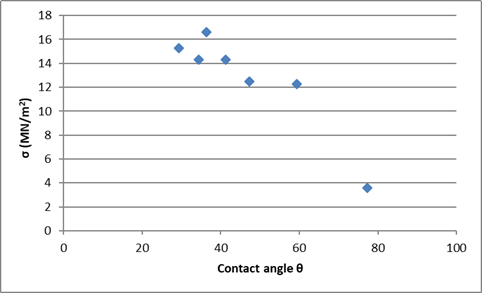
Lap joint strength vs. water contact angle for steel bonded with epoxy
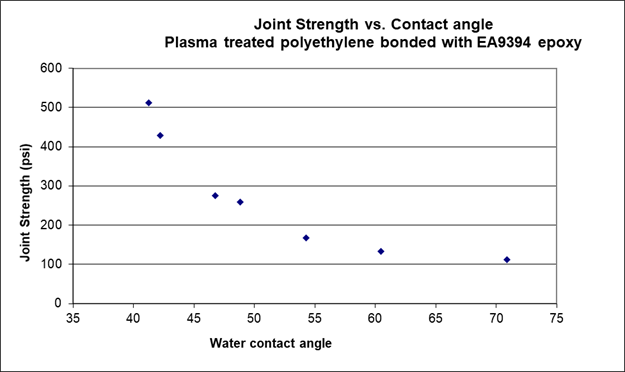
Lap joint strength vs. water contact angle for plasma-treated polyethylene bonded with epoxy
In general, poorly prepared surfaces that are improperly treated or contaminated tend to show high contact angles and poor adhesion. Well-prepared, clean, high-energy surfaces generally show low contact angles and excellent adhesion.
Using contact angle measurements for process control in manufacturing requires specifications to be established that define the range of measurements that prove the readiness of surfaces to be bonded. For instance, is the acceptable range of cleanliness measurements 40°-50° or 10°-20°? This contact angle range is generally precise and well-defined, but it will vary depending on the materials involved.
Revolutionize Your Manufacturing with Surface Quality Inspection Technology.
How to Understand the Surface Preparation Specification (Water Contact Angle) of an Adhesive for Optimum Bond Strength
The relationship between water contact angle and the quality of surface preparation, as seen in the above charts, has been understood for a long time. However, only recently have adhesive manufacturers begun specifying contact angle measurements as a guide to help their customers ensure consistent, high-quality surface preparation.
Water contact angle specifications for appropriate surface preparation are established through comprehensive adhesive bond testing to understand the strength requirements of the joint interface. Reliable bonds can’t be created just by using great adhesives: the surfaces they’re applied to must be clean and prepared to establish strong bonds, and the properties that allow these strong bonds to be established must be controlled. Contact angle measurements are becoming the standard for ensuring high-quality adhesion and reliable surface preparation.
Henkel, a world leader, and innovator in adhesive formulation, is also leading the way in specifying exactly what water contact angle ranges are necessary to achieve when using their adhesives in manufacturing.
As an example, the Loctite Ablestik 8175 datasheet lays out the necessity of the correct surface preparation and surface quality testing:
“Surface Preparation -
1. Proper preparation of substrates is critical to optimize epoxy adhesive flow and adhesion. The substrate water contact angle (WCA) is a good indicator of the capillary forces that drive resin flow and adhesion. Henkel recommends industry standards of <50° for substrate WCA. This allows the epoxy resin to better wet the substrate. Users may want to establish the precise relationship between WCA and product performance for their specific application.
2. Substrate surface chemistry is impacted by the entire substrate supply chain including supplier manufacturing methods, packaging, handling, plasma treatment, storage conditions, exposure to environment, and subsequent cleaning steps.”
Henkel was the first adhesive manufacturer to build contact angle measurements according to the specifications for the proper use of their products. Other paints and pressure-sensitive adhesive manufacturers are following in their footsteps.
Using Contact Angle Measurements for Real-world Process Control
To harness the predictive power of contact angle measurements, manufacturers need to be able to implement them in the production process seamlessly.
Brighton Science's Surface Analyst brings this measurement technology out of the lab and onto the line with rapid, accurate, and flexible surface quality inspection devices. The Surface Analyst can measure contact angles on any complex-shaped surface in any orientation in seconds. Manufacturers can reliably and repeatedly measure the quality of their surfaces at any point in the process to monitor the performance of their cleaning machinery, inspect incoming part quality, quantify surface treatment degradation during storage, and establish a surface quality standard from the very beginning of their new product or process development.
To learn more about contact angle and its benefits, read the eBook "What is Contact Angle?"

